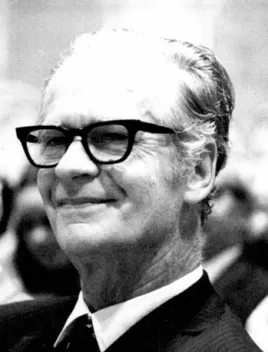Skinner Frequently Asked Index: ★★
Biography

Skinner (1904-1990) American behaviorist psychologist, representative of new behaviorism, and founder of the theory of operational conditioning. He created the Skinner Box, an instrument for studying animal learning activities.
writings
1. "Walden II"
In this novel he depicted an idealized culture designed according to the principle of operational conditioning, which still has great significance to this day.
2. Teaching Machines
point of view
1. Skinner's theory of action of operational conditions
Skinner divides human and animal behavior into two categories: responsive behavior and manipulative behavior. Responsive behavior is caused by a specific stimulus and is an involuntary reflexive response; while manipulative behavior is not associated with any particular stimulus and is a spontaneous response made by the organism. In everyday life, most of people's behavior is operational. Classical conditional action theory can explain the generation of responsive behavior, while the theory of operant conditional action can explain the generation of operant behavior.
Supplementary Form: Students connect the classroom (which is neutral at first) with the enthusiasm of the teacher, and the class evokes positive emotions.
2. The basic law of the action of operant conditions
Skinner believes that reinforcement is an effective and important condition for shaping behavior, and the process of shaping behavior is the process of learning. Reinforcement is divided into positive reinforcement and negative reinforcement.
Positive reinforcement, also known as positive reinforcement, enhances the frequency of response by presenting the desired pleasant stimulus; negative reinforcement, also known as negative reinforcement, enhances the frequency of response by eliminating or discontinuing aversive unpleasant stimuli.
When selecting a reinforcer, the Premark principle, also known as the "grandmother's rule", can be followed, that is, high-frequency activity can be used as an effective reinforcement for low-frequency activity. For example, teachers often use "as long as you finish your homework, you can go out and play" and "After learning this difficult point, we will take a break" and so on.
Avoidance conditioning: When an aversive stimulus arises and the organism responds to escape the aversion stimulus, the probability of the reaction occurring increases. For example, if you see garbage on the road, take a detour and walk away; temporarily leave the house when you feel that the people in the house are noisy.
Avoidance conditional effect: When the stimulus signal that indicates the imminent appearance of the aversion stimulus is presented, the organism can also spontaneously make a certain response, thus avoiding the appearance of the aversion stimulus, and the probability of the reaction occurring increases.
Regression refers to the phenomenon that after the conditioned stimulus is formed, if it is not strengthened, the conditioned response will gradually weaken until it disappears.
Punishment is the process by which an organism presents an aversive stimulus after making a certain response to eliminate or suppress this response. Punishment differs from negative reinforcement, which increases the probability of a reaction occurring in the future by excluding aversive stimulus, while punishment reduces the probability of a reaction occurring in the future through the presentation of aversive stimulus. Depending on whether the stimulus is presented or removed, the punishment can also be divided into presentation punishment and removal punishment.
3. Program teaching
(1) The basic principles of program teaching
The basic principle of program teaching is to adopt the continuous approach method, which is continuously reinforced by the designed program, so that students can form the behavior pattern that educators want.
(2) Principles of program teaching
(1) Small step principle: (2) positive response principle; (3) The principle of self-pace; (4) The principle of timely feedback; (5) The principle of low error rate.
4. Behavior shaping
The so-called shaping is to help students achieve their goals through small steps of reinforcement. Skinner argues that "education is shaping behavior," and he uses a continuous approach that reinforces the direction of the reaction that tends to be shaped until the new behavior needed is introduced. Behavior shaping techniques include chain shaping and reverse chain shaping.